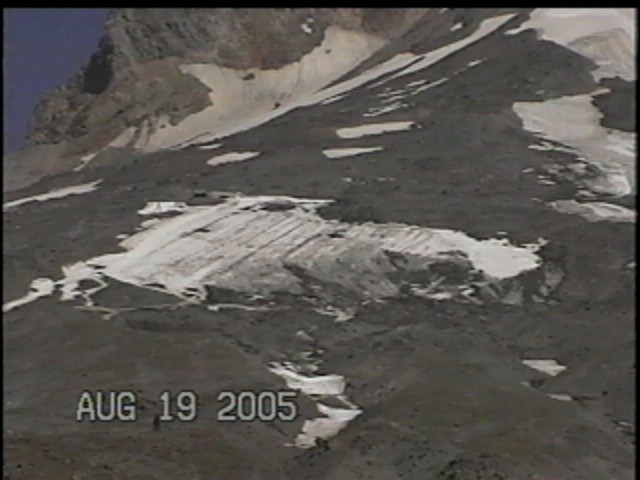
If you’ve ever gone spring or summer skiing you’ve probably skied on salted snow. Ski areas often apply salt to their runs and park features in the late season to firm up slush, making it less sticky and hold its form better. But as thousands of pounds of salt are spread on mountains across the country, environmentalists start to take note, and when people hear that nearly one million pounds of salt are applied to Mt. Hood every year, most of them become concerned. Should we be worrying about if all this salt is bad for the environment?
Let’s take a look.

It’s worth noting that the salt that is usually applied to runs in North America is typically plain old sodium chloride. The same stuff that we put on our food, except coarser. Ski resorts in Europe have used harsher types of non-sodium chloride salt in the past, and as a result, they have had to severely restrict their usage.
One of the most insightful studies on the subject was conducted by scientist and skier, Nicolas Teichrob, in 2008. Chloride concentration in water is indicative of salinity and is also benchmarked in environmental regulations. In his study, Teichrob examined the chloride levels in Horstman Creek, which is fed by a glacier that is salted for ski camps in the summer, and compared them to those of Blackcomb Creek, fed by a neighboring unsalted glacier.

During the season of his data collection, 90,020 kg, or 198,460 lbs, of salt had been applied to Horstman Glacier. Teichrob found that the chloride concentration in Horstman Creek reached a maximum of 64.3 mg/L during his time of testing. While that’s still 5 to 60 times higher than the amount of chloride that was measured in Blackcomb Creek, it sits well below the British Columbia approved long-term average water quality guideline of 150 mg/L for freshwater aquatic life.

If we look at Timberland Lodge on Mount Hood in Oregon, where about one million pounds of salt is applied every season, we see a larger impact. Chloride concentrations in nearby rivers were measured to be no more than 117 mg/L, still less than water quality regulations. So even the most extreme case of salting in North America it doesn’t seem to be causing any urgent issues.
Even if salting isn’t having adverse effects on the environment right now, however, there are a few things that could cause problems over time. With climate temperature trends on the rise, glaciers, snowfields, and snowpacks are receding earlier each season. Resorts that use salt likely reacted by increasing their use as a way to combat the sticky slush that comes with the melting conditions.

Not all of the salt that is put on the snow ends up in runoff, some of it seeps into the glacier or snowpack and is stored there. The salt stored in the snowpack is then released when things start to melt. While these releases haven’t seemed to cause any concerning spikes of chloride concentration in the past, they are just another thing to consider, as they could compound the water quality issues that would result from high salting in an especially warm year.
One more factor to look at is the way that saltwater settles in stagnant water. Saltwater is marginally more dense than freshwater so it settles in certain areas, such as lakes and ponds, and could cause areas of high chloride concentration that would hinder the growth of aquatic plants. While this is more of a concern with road salting, it is something to consider if a particular ski area’s runoff leads to a small lake or pond.

In the end, ski resorts and environmentalists will have to work together to make sure nature isn’t harmed. Despite all the controversy, salting ski runs with regular old NaCl salt, even in extreme cases, doesn’t seem like it will do any harm to wildlife any time soon. But whole river ecosystems at stake so it would be comforting to see ski resorts cut back on salting or, at the very least, step up their monitoring efforts.